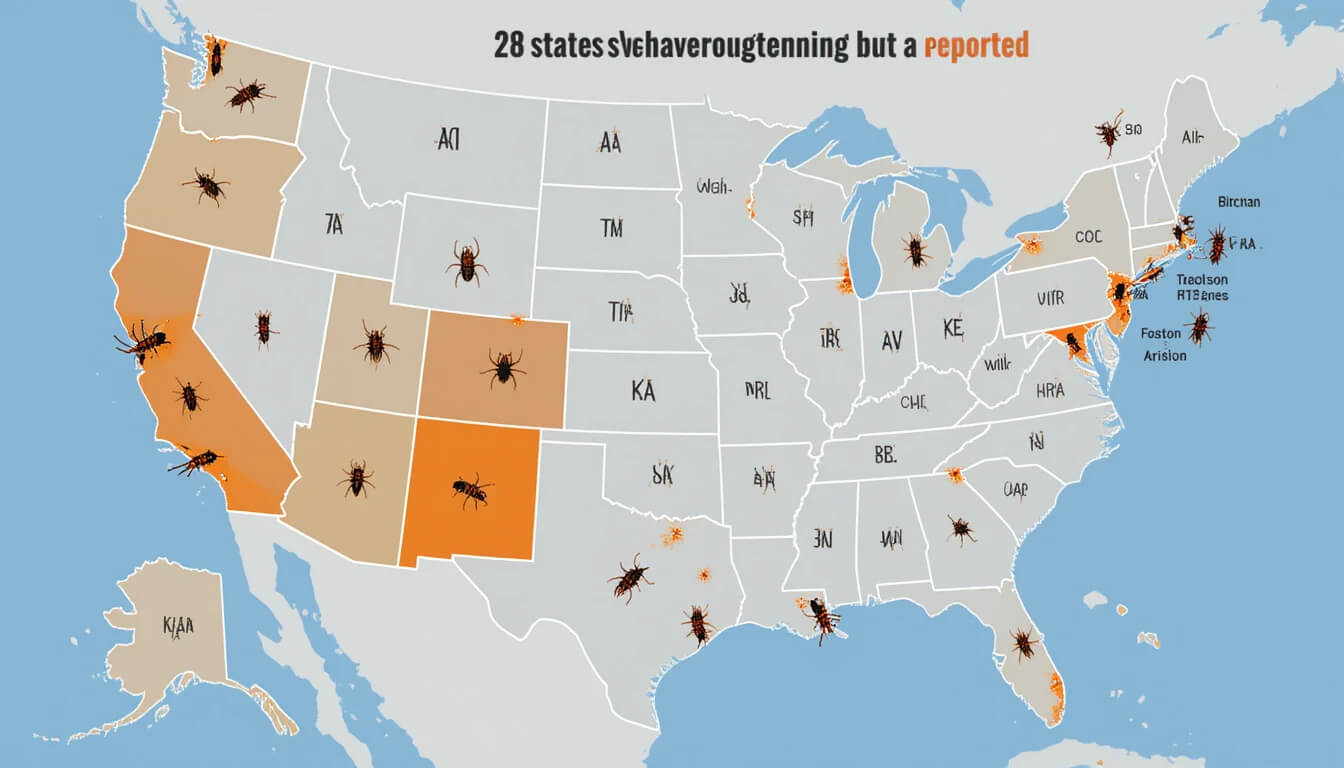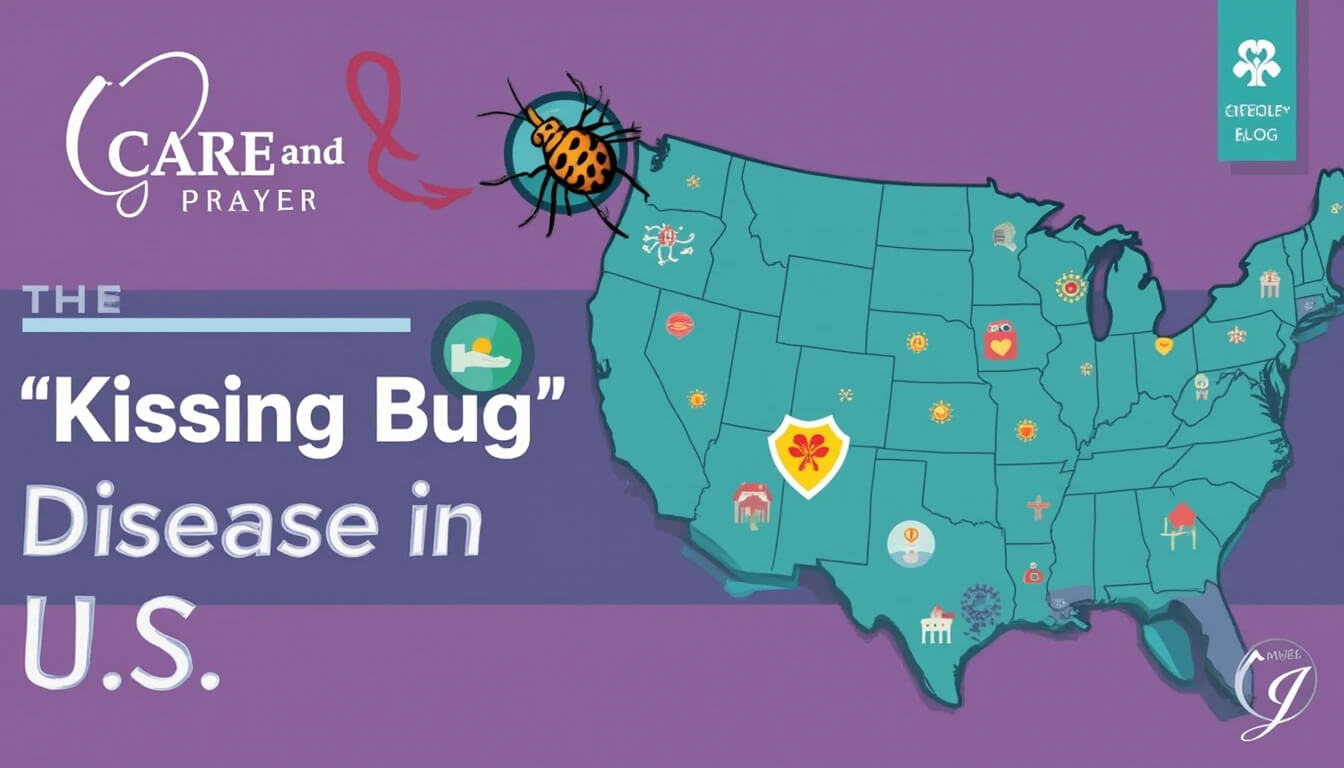Often called a 'silent killer,' Chagas is more common than you think. Learn how to protect your family and recognize the signs before it's too late.
A bug's "kiss" sounds harmless, even poetic. But when that 'kiss' comes from a specific nocturnal insect, it can lead to a silent, potentially life-threatening illness. We're talking about Chagas, a condition transmitted by triatomine bugs and more commonly known as the kissing bug disease. For years, this was considered a problem exclusive to Central and South America. Not anymore. Reports confirm these bugs are present in over half of the United States, and locally acquired infections are a growing concern.
This isn't a reason to panic, but it is a call to be informed. At Care and Prayer, we believe knowledge and preparation are the cornerstones of a healthy, worry-free life. This guide will walk you through everything you need to know: what kissing bug disease is, how to identify the bug, its symptoms, crucial prevention tips for your home, and exactly what to do if you encounter one.
What Exactly Is Kissing Bug Disease (Chagas)?
Kissing bug disease, medically known as American trypanosomiasis, is a parasitic illness. It's not the bug's bite that's the problem, but rather what happens next. The disease is caused by a protozoan parasite called Trypanosoma cruzi.
Here’s the transmission process:
-
The Bite: A kissing bug, or triatomine bug, typically bites an exposed area of skin, often on the face, while a person is asleep.
-
The Contamination: As it feeds, the bug defecates near the bite wound. The T. cruzi parasites are in the bug's feces.
-
The Infection: The person unknowingly scratches or rubs the bite area, pushing the infected feces into the wound, or into their eyes or mouth.
Once inside the body, the parasites multiply and can cause a range of health issues. It's this stealthy method of infection that makes awareness and prevention so vital.
The Two Faces of Chagas: Acute vs. Chronic Symptoms
One of the most deceptive aspects of the kissing bug disease is its two-phase nature. Many people who are infected never show signs at all, allowing the parasite to live in their bodies for years without their knowledge.
Acute Phase
This phase occurs within the first two months of infection. Symptoms are often nonexistent or mild, making them easy to dismiss as a common cold or flu.
-
Fever
-
Fatigue and body aches
-
Headache
-
Rash
-
Loss of appetite
-
A swollen eyelid at the site of infection (known as Romaña's sign)
-
Swelling and redness at the bite site (a chagoma)
Chronic Phase
If left untreated, the disease enters the chronic phase. For decades, about 70-80% of people will remain without symptoms. However, for the remaining 20-30%, the parasites can cause severe, life-threatening damage.
-
Cardiac Complications: This is the most serious risk. The parasite can damage the heart muscle, leading to an enlarged heart, abnormal heart rhythms (arrhythmias), and eventually, heart failure.
-
Gastrointestinal Complications: The parasite can also cause an enlarged esophagus or colon, leading to severe difficulties with eating and digestion.
Mapping the Risk: Where Are Kissing Bugs Found in the U.S.?
While historically a Latin American disease, the triatomine bug has long been native to the southern half of the United States. According to the Centers for Disease Control and Prevention (CDC), kissing bugs have been found in at least 28 states, primarily in the South, from California to Florida, and as far north as Pennsylvania.
However, the risk of local transmission in the U.S. has been low compared to Latin America. This is partly because U.S. housing is generally better sealed, and the specific strains of kissing bugs here are less likely to defecate on their host. Still, with climate change and increased travel, the risk is not zero, and awareness is our best defense.

How to Identify a Kissing Bug (And What It’s Often Mistaken For
Many bugs look menacing, but it's important to know what you're looking for. Triatomine bugs have very distinct features:
-
Size: They are typically ½ to 1 inch long.
-
Shape: They have a long, oval-shaped body.
-
Color: They are usually dark brown or black.
-
Markings: Most species have a distinct band of red, orange, or yellowish markings around the edge of their body.
-
Head: They have a unique, thin, cone-shaped head with long, slender mouthparts used for feeding.
Common Look-alikes: Don't confuse them with the boxelder bug or the stink bug, which have a different body shape and lack the distinctive cone-shaped head.
Fortress Your Home: A 7-Step Prevention Checklist
Prevention is far better than a cure, especially with a silent illness like Chagas. You can make your home an unattractive place for kissing bugs with these actionable steps:
-
Seal Your Home: Look for and seal any cracks or gaps in your foundation, walls, and around windows and doors where bugs can enter.
-
Use Screens: Ensure you have tight-fitting screens on all windows and doors and repair any holes.
-
Manage Outdoor Lighting: Use "bug light" bulbs for outdoor fixtures and position lights away from your home, as bright white lights can attract insects.
-
Keep It Clean: Clear away piles of wood, rocks, and yard debris from near the house, as these are common hiding spots for bugs.
-
Protect Your Pets: Keep pet sleeping areas clean and check them regularly. While rare, pets can also contract the disease and may bring the bugs indoors.
-
Yard Maintenance: Keep your yard tidy and trim back any vegetation touching the house.
-
Roofs and Chimneys: Cover any chimneys with a mesh cap and check for gaps in roofing where bugs could enter an attic.
What to Do if You Find or Get Bitten by a Kissing Bug
If you suspect you've found a kissing bug, do not touch or crush it with your bare hands. This can expose you to the parasite.
-
Safely Capture It: Use a container or a plastic bag to scoop it up without direct contact.
-
Disinfect the Area: Clean the surface where the bug was with a bleach solution.
-
Contact Professionals: Reach out to your local health department or a university entomology lab for identification. They can provide specific advice for your area.
-
If You've Been Bitten: Don't panic. A bite does not equal an infection. Gently wash the area with soap and water and avoid scratching it. Consult with a healthcare provider, especially if you develop flu-like symptoms or swelling at the bite site. They can determine if testing for kissing bug disease is necessary.
2. Just how deadly is Chagas disease?
In its acute phase, Chagas disease is rarely deadly. The real danger lies in the chronic phase, which can develop 10-20 years after the initial infection. If left untreated, the resulting cardiac or gastrointestinal damage can be fatal, which is why it's sometimes called a "silent killer."
3. Can my pets get kissing bug disease?
Yes, dogs and other mammals can be infected with Chagas disease. They face similar risks of cardiac issues. It's important to keep their sleeping areas clean and away from potential bug hiding spots, like woodpiles or sheds.
4. What is the treatment for Chagas disease?
Treatment is most effective when given during the acute phase. Antiparasitic medications like benznidazole and nifurtimox can kill the parasite. In the chronic phase, treatment focuses on managing the symptoms, such as using medication to control heart rhythm problems.
5. Where did the name “kissing bug” come from?
The bug earned its memorable name from its habit of biting people on the face, often near the lips or eyes, while they are asleep.
The spread of the kissing bug disease into the United States is a sobering reminder that we must remain vigilant about our health and environment. But with knowledge comes power. You now know what this disease is, how to recognize its vector, and most importantly, how to take practical, effective steps to protect your home and loved ones. Prevention and early awareness are your strongest tools against this silent threat.
Stay informed, stay vigilant, and take care of one another. Your well-being is a blessing worth protecting.
What steps will you take today to secure your home? Share this vital information with friends and family to help spread awareness, not fear. Leave a comment below with any questions or thoughts.
The Care and Prayer team is a dedicated group of writers and researchers passionate about delivering clear, compassionate, and trustworthy information on health, wellness, and faith. We believe in empowering our community to live healthier, more peaceful lives through knowledge and shared support.
